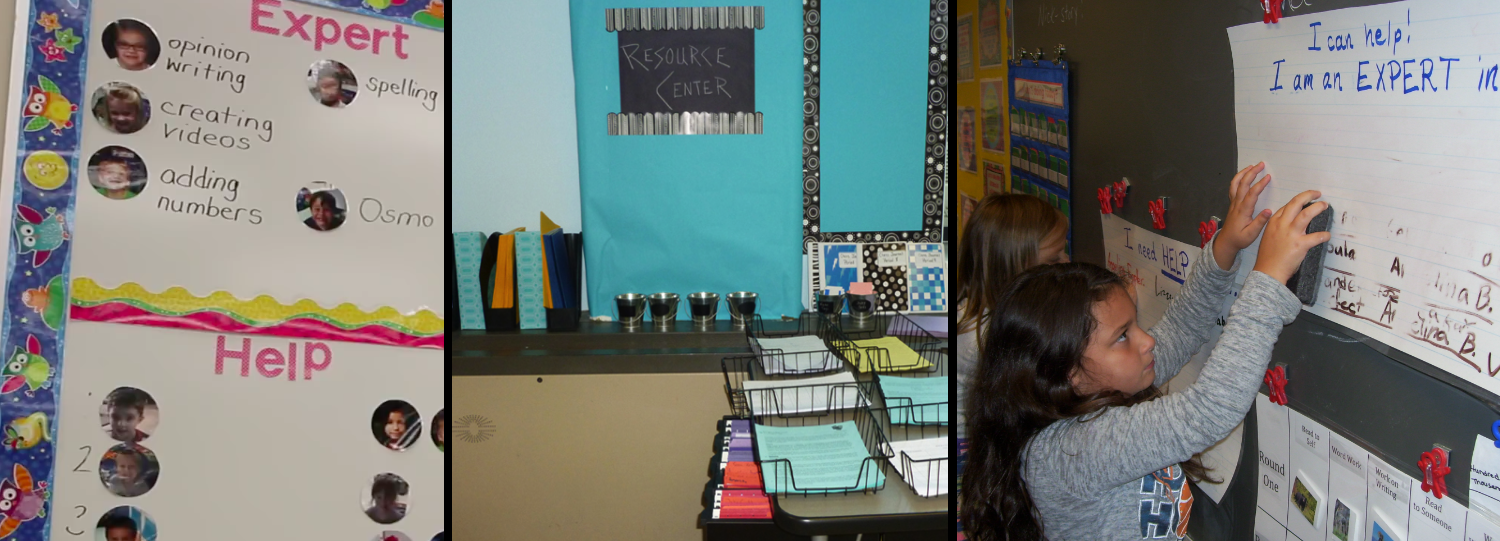I have great respect and appreciation for teachers who work hard to shift their paradigms and practices to design Learner-Active, Technology-Infused Classrooms. The multi-year process requires that they move through three levels of innovation implementation:
Level I) The Framework
 As a foundation, the Learner-Active, Technology-Infused Classroom is a combination of Authentic Learning Units (ALUs) and a collection of structures. The first step in design is to create a compelling problem-based task for the unit, followed by a rubric to provide clearly articulated expectations. Creating activity lists of required, choice, and optional activities builds student responsibility for learning, as do structures, such as the Help Board, Peer Expert Board, and Resource Area. All of this becomes the first level of design in shifting to a Learner-Active, Technology-Infused Classroom.
As a foundation, the Learner-Active, Technology-Infused Classroom is a combination of Authentic Learning Units (ALUs) and a collection of structures. The first step in design is to create a compelling problem-based task for the unit, followed by a rubric to provide clearly articulated expectations. Creating activity lists of required, choice, and optional activities builds student responsibility for learning, as do structures, such as the Help Board, Peer Expert Board, and Resource Area. All of this becomes the first level of design in shifting to a Learner-Active, Technology-Infused Classroom.

However, students may not show the desired achievement gains without . . .
Level II) Purposeful Learning Activities
As students encounter an unknown skill or concept on the rubric, they should be able to look at the activity list and find a variety of ways to learn, such as through videos, how-to sheets, learning centers, and more. The challenge is that conventionally, a teacher presents the content to the whole class and then assigns activities for students to practice what they’ve learned. In Learner-Active, Technology-Infused Classrooms, teachers minimize the amount of whole-class instruction; however, they must still provide direct instruction through a variety of venues. Therefore, once teachers have the foundation, they turn to creating and improving upon their library of learning activities. This improves student achievement; however, to raise the level of academic rigor so that students build deep understanding of content and can apply it to new situations, you need . . .
Level III) Masterful Teacher Facilitation
The role of teachers in Learner-Active, Technology-Infused Classrooms shifts to engaging with students “in the moment” as they pursue learning goals. Teachers help students learn to self-assess, set goals, manage time, and select appropriate learning resources. They work from the Help Board to assist those in need of help. Most importantly, they probe students’ thinking through “What if?” questions and content-rich conversations. They observe and listen to students, synthesize the data, determine the natural next step for a student, and then provide guidance. It’s difficult to locate teachers because they’re sitting down with students.
It’s important to move through to include all three levels of implementation. Take the worthy journey to design classrooms that are the embodiment of Students Taking Charge, and change the world!
